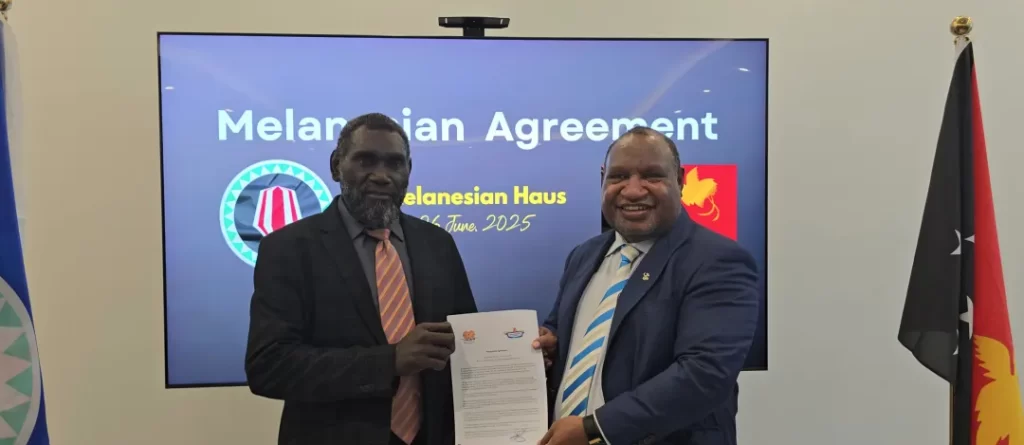In the volcanic and island-dotted landscape of the South Pacific, a historic document quietly made its mark — the Melanesian Agreement. But its significance goes far beyond what a single sheet of paper might suggest.
Jointly signed by the Government of Papua New Guinea (PNG) and the Autonomous Bougainville Government, this agreement signals a substantive step forward in Bougainville’s journey toward potential independence.
For Papua New Guinea, the agreement is both the fulfillment of a peace promise and a major test of national unity.
The accord traces back to June 12, 2025, at Burnham Military Camp in New Zealand, where, under external mediation, both parties finalized its content. On June 26, it was formally signed in Port Moresby — a gesture underscoring not only Pacific “South-South cooperation” but also the increasing regionalization of the Bougainville issue. It is no longer solely a domestic matter; it is gradually entering the core of regional political discourse.
Crucially, the agreement acknowledges more than just the 2019 referendum, in which 97.7% voted in favor of independence. It also outlines a transitional path with distinct “Melanesian characteristics” that balances political reality with constitutional frameworks.
According to the agreement, Bougainville’s future status will no longer hinge solely on a referendum result. Instead, the matter has been brought into the legislative process of the PNG National Parliament, which will make a preliminary decision under constitutional procedures. If disagreement remains, the issue will then return to a negotiation mechanism. This arrangement represents a form of “soft landing” — a pragmatic application of political wisdom.
The agreement emphasizes several important institutional safeguards:
- Recognition of Bougainville’s unique status, addressing historical complexities while preserving room for future resolution;
- Defined roles for both the PNG National Parliament and the Bougainville House of Representatives, avoiding a unilateral or overly simplistic approach;
- Establishment of a Bipartisan Parliamentary Committee to align messaging and coordinate information dissemination;
- Nationwide public awareness and civic education campaigns, aimed at cooling public sentiment and preparing the ground for transformation.
What draws even more attention is the possibility — stated in the agreement — of international monitoring mechanisms and even United Nations involvement in the future. This should not be overlooked: while it could lend credibility to the peace process, it might also open a window for external actors to intervene. The South Pacific remains a sensitive region of geopolitical competition, and safeguarding an indigenous-led, peaceful resolution will test the political will and strategic wisdom of PNG’s leadership.
The future of Bougainville is no longer simply a matter of “to secede or not to secede.” It is becoming a stress test for the entire constitutional and national framework of Papua New Guinea. If handled wisely, it could become a model for peaceful transformation; if allowed to be dominated by radical sentiment, it could sow long-term risks for national unity.
When PNG Prime Minister James Marape and Bougainville President Ishmael Toroama appeared before cameras at the signing ceremony, their calm demeanor reflected both political confidence and a sober awareness of the tough negotiations that lie ahead.
In short, Bougainville is not entering a straightforward road toward independence or continued autonomy — it is stepping into a new strategic phase defined by dialogue, legal process, and institutional negotiation. And this very phase will serve as a true litmus test of modern governance capacity in Papua New Guinea.


